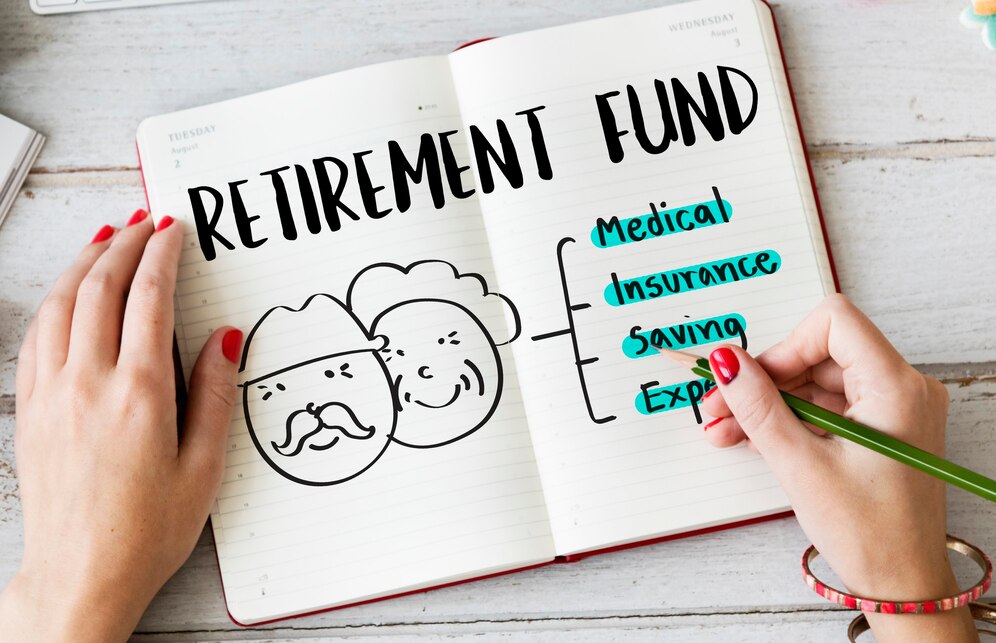
Outline:

Master the Art of Building an Emergency Fund That Safeguards Your Retirement Dreams
-
Introduction: Why an Emergency Fund is Crucial for Your Retirement Security
What Is an Emergency Fund and Why Does It Matter?
-
Definition and Importance of an Emergency Fund
-
The Key Role It Plays in Safeguarding Your Retirement
READ MORE: The Awards You Never Get When Investing: Unveiling the Hidden Truths.
The Difference Between an Emergency Fund and Retirement Savings
-
Emergency Fund vs. 401(k) or IRA: Key Differences
-
How They Work Together to Secure Your Future
How Much Should You Save for Your Emergency Fund?
-
The 3-6 Month Rule: How Much Is Enough?
-
Factors That Influence the Size of Your Fund
Assessing Your Financial Situation: Are You Saving Enough?
-
Calculating Your Monthly Expenses and Income
-
How to Factor in Unexpected Life Events
Special Considerations for Self-Employed Individuals
-
Building an Emergency Fund When You Don’t Have a Steady Paycheck
Step-by-Step Guide to Building Your Emergency Fund
-
Setting Realistic Savings Goals
-
Where to Keep Your Emergency Fund for Easy Access
Budgeting Tips to Accelerate Your Emergency Fund Growth
-
Cutting Unnecessary Expenses
-
Saving from Extra Income: Side Gigs and Bonuses
How to Use Automation to Save Consistently
-
Setting Up Automatic Transfers to Your Emergency Fund
The Right Investment Choices for Your Emergency Fund
-
The Importance of Liquidity: Avoid Long-Term Investments
-
High-Yield Savings Accounts, Money Market Accounts, and CDs
Risk vs. Reward: Should You Invest Your Emergency Fund?
-
Why Riskier Investments Aren’t Ideal for Emergency Savings
-
Exploring Low-Risk Options That Still Offer Growth
Emergency Fund vs. Investment Portfolio: Striking a Balance
-
How to Keep Your Emergency Fund Separate from Your Investments
Protecting Your Emergency Fund from Inflation
-
The Impact of Inflation on Your Fund’s Value
-
Strategies to Protect Your Savings in an Inflationary Economy
When Should You Use Your Emergency Fund?
-
What Constitutes a True Emergency?
-
How to Keep Your Fund Intact for True Crises
What to Do if You Have to Dip Into Your Emergency Fund
-
Rebuilding Your Fund After a Withdrawal
Maintaining Your Emergency Fund Over Time
-
How to Keep It Updated as Your Life Changes
-
Revisiting Your Fund’s Size Every Few Years
Staying Disciplined: Preventing the Use of Emergency Fund for Non-Essentials
-
Setting Boundaries and Understanding Priorities
Conclusion: Safeguard Your Future by Building a Robust Emergency Fund
FAQs
-
How do I know if my emergency fund is large enough?
-
Can I use my emergency fund for medical expenses?
-
How long will it take to build a substantial emergency fund?
-
Should I prioritize my emergency fund over retirement savings?
-
What’s the best place to store my emergency fund?
Master the Art of Building an Emergency Fund That Safeguards Your Retirement Dreams.

READ MORE: Emergency Fund for Retirees | Protecting Retirement Savings
Introduction: Why an Emergency Fund is Crucial for Your Retirement Security
It’s easy to focus on long-term goals like saving for retirement, but many people overlook the importance of preparing for the unexpected. The truth is, having an emergency fund is not just about handling a job loss or an urgent medical expense; it is also a key safeguard for your retirement plans.
An emergency fund prevents you from dipping into your retirement savings when life’s curveballs come at you. Without it, you risk sabotaging your long-term financial future, especially your ability to retire on your own terms. An emergency fund can be the difference between maintaining your financial independence or having to sacrifice your retirement savings to meet immediate needs.
In this article, we’ll explore the best strategies to build an emergency fund that protects both your short-term security and your retirement dreams. By following these actionable steps, you can set yourself up for success and ensure that your emergency fund works in tandem with your retirement savings, rather than detracting from it.
What Is an Emergency Fund and Why Does It Matter?
An emergency fund is a safety net—a pool of money set aside specifically for unexpected expenses or financial emergencies. It serves as a financial cushion that allows you to cover unforeseen costs, such as:
- Medical bills from an unexpected illness or injury
- Car repairs that can’t be delayed
- Home repairs, like a leaky roof or broken furnace
- Job loss or sudden income disruption
- Unexpected travel expenses for family emergencies
The Importance of an Emergency Fund
An emergency fund is critical because life is full of uncertainties. Whether it’s a medical crisis, a sudden job loss, or a natural disaster, these events can create significant financial strain. Without an emergency fund, you might be forced to borrow money, rack up credit card debt, or even dip into your retirement savings to cover the costs.
Not having an emergency fund also increases financial stress. Knowing that you have a cushion to fall back on during tough times can offer peace of mind and allow you to navigate the challenges of life without jeopardizing your long-term financial goals, such as retirement.
The Difference Between an Emergency Fund and Retirement Savings
Before diving deeper into how to build your emergency fund, it’s important to understand the key differences between an emergency fund and retirement savings.
Emergency Fund vs. Retirement Savings: Understanding the Difference
- Emergency Fund: This fund is designed for short-term, unforeseen expenses. It is liquid, meaning it should be easily accessible in a time of need. Think of it as your first line of defense against unexpected costs.
- Retirement Savings: Your 401(k), IRA, or pension is for long-term growth. These funds are meant to accumulate over the years to provide for you in your retirement. They are generally not meant to be touched before retirement age without penalties.
Both are vital, but they serve different purposes. An emergency fund is about safeguarding your immediate financial well-being, whereas retirement savings are about securing your future decades down the road.
Having both funds in place ensures that you don’t have to dip into your retirement savings when life’s unexpected moments arise. You can weather the storm without slowing down your long-term growth, allowing you to continue building wealth for retirement.
How Much Should You Save for Your Emergency Fund?
Determining how much to save for an emergency fund depends on several factors, such as your lifestyle, job stability, and family needs. Most financial experts recommend saving at least 3 to 6 months’ worth of living expenses. However, the ideal amount will vary based on your unique circumstances.
The 3-6 Month Rule: How Much Is Enough?
The general guideline is that your emergency fund should cover 3 to 6 months of essential living expenses. This includes your rent or mortgage, utilities, groceries, transportation, and any other necessary monthly costs.
- If you have a stable, predictable income and no dependents, 3 months of expenses might suffice.
- If you are self-employed, have an irregular income, or support a family, it’s a good idea to aim for 6 months or more of living expenses.
Factors That Influence the Size of Your Fund
Your lifestyle and financial situation can influence how much you need in your emergency fund. For example:
- Job Stability: If you’re in a high-risk industry or have an unpredictable income, a larger emergency fund may be necessary to ensure you can weather a job loss or other disruptions.
- Health and Family Needs: If you have dependents or face health challenges, you may need to save more. This ensures that your family’s needs are met in the event of an emergency.
- Other Savings Goals: Consider whether you have other savings goals, like a down payment on a house or an upcoming vacation. Balancing these goals with your emergency fund can help you prioritize your savings efficiently.
Assessing Your Financial Situation: Are You Saving Enough?
To determine how much you should save, start by assessing your financial situation. Begin by calculating your monthly living expenses. This includes everything from rent to groceries to utilities. Once you have a figure, multiply it by 3 or 6 months, depending on your needs.
How to Calculate Your Monthly Expenses
- Rent/Mortgage
- Utilities (electricity, water, internet, etc.)
- Food and groceries
- Transportation costs (gas, public transit, etc.)
- Insurance premiums (health, auto, home, etc.)
- Any other recurring expenses (childcare, debt payments, subscriptions)
Once you’ve identified your total monthly expenses, multiply the figure by 3 or 6 to establish how much you need to save in your emergency fund.
Step-by-Step Guide to Building Your Emergency Fund
Building an emergency fund doesn’t have to be overwhelming. With a systematic approach, you can steadily work toward your goal without feeling too burdened.
Setting Realistic Savings Goals
Start by setting a realistic target for your emergency fund. For example, if your goal is to save 3 months’ worth of living expenses, break the total amount down into manageable monthly goals. If your monthly living expenses are $3,000, you’ll want to save $9,000 for your emergency fund.
Instead of focusing on the entire $9,000, start small. Saving $500 per month brings you closer to your goal without feeling like a huge financial stretch.
Where to Keep Your Emergency Fund
It’s important to store your emergency fund in a place where it’s easily accessible but also safe from being spent on non-emergencies. Look for a high-yield savings account, money market account, or a certificate of deposit (CD).
While traditional savings accounts offer little interest, high-yield accounts can offer better returns, allowing your emergency fund to grow over time.
Budgeting Tips to Accelerate Your Emergency Fund Growth
Budgeting is a powerful tool when it comes to building an emergency fund. It helps you identify areas where you can cut back on unnecessary spending, enabling you to funnel more money into your emergency fund.
Cutting Unnecessary Expenses
Review your discretionary spending and identify areas where you can cut back. These might include:
- Eating out less frequently
- Cancelling unused subscriptions (streaming services, gym memberships, etc.)
- Shopping less for non-essential items
- Lowering utility costs (turning off lights, using energy-efficient appliances)
These small lifestyle adjustments can add up, and redirecting these savings to your emergency fund can accelerate the process.
Saving from Extra Income
Do you receive bonuses, tax refunds, or side hustle income? Instead of splurging, direct a portion of these windfalls into your emergency fund. Saving $500 from a bonus or tax refund can give your emergency fund a substantial boost.
How to Use Automation to Save Consistently
Consistency is key when building an emergency fund. One of the best ways to ensure that you’re saving regularly is to set up automatic transfers to your savings account.
Setting Up Automatic Transfers
Set up a weekly or monthly transfer from your checking account to your emergency fund account. By automating the process, you take the guesswork and temptation out of saving. Over time, this will lead to significant growth in your emergency fund without you even noticing.
The Right Investment Choices for Your Emergency Fund
While it’s important for your emergency fund to be liquid and easily accessible, you also want to ensure that it is protected from inflation and stagnant growth. A good emergency fund should earn some interest, but it should remain safe and secure.
High-Yield Savings Accounts, Money Market Accounts, and CDs
These accounts are ideal because they offer better interest rates than regular savings accounts while keeping your funds liquid.
Money market accounts typically offer higher interest rates, while CDs offer fixed interest rates, but your money is tied up for a period of time. For an emergency fund, a high-yield savings account or money market account is usually the best option.
Risk vs. Reward: Should You Invest Your Emergency Fund?
Investing your emergency fund in stocks, bonds, or mutual funds is not advisable. The purpose of an emergency fund is to have money readily available in case of an emergency. Investments such as stocks can fluctuate, and there’s a risk you could lose money if you need to access your emergency fund during a market downturn.
Why Not to Invest Your Emergency Fund
If you invested your emergency fund in the stock market, you could face the risk of having your funds tied up when you need them most. Instead, focus on liquid and safe options like savings or money market accounts, which provide stability and quick access.
When Should You Use Your Emergency Fund?
Your emergency fund should only be used for true emergencies. These might include:
- Job loss or temporary unemployment
- Medical emergencies or unexpected health expenses
- Major car repairs that you can’t afford upfront
- Urgent home repairs (e.g., a leaky roof or broken furnace)
- Emergency travel costs for a family crisis
Avoid using your emergency fund for non-essential expenses, such as vacations, impulse purchases, or lifestyle upgrades. If you start dipping into your emergency fund for these reasons, you’ll be eroding the very cushion that’s designed to protect your long-term financial security.
What to Do if You Have to Dip Into Your Emergency Fund
If you do need to use your emergency fund, it’s important to replenish it as soon as possible. Set a goal to rebuild your emergency fund back to its original amount within a set timeframe.
Rebuilding Your Fund After a Withdrawal
If you take out money for an emergency, make sure to continue contributing to your emergency fund each month. This ensures that you’ll have money set aside the next time a crisis arises.
Maintaining Your Emergency Fund Over Time
An emergency fund isn’t a one-time task—it’s something that should evolve over time. Your emergency fund needs to be adjusted as your lifestyle, job situation, and financial goals change.
Revisit Your Fund Regularly
Review your emergency fund every year to make sure it’s still enough to cover your current expenses. As your income increases or as your family grows, you may need to increase the size of your fund.
Conclusion: Safeguard Your Future by Building a Robust Emergency Fund
An emergency fund is the foundation of a sound financial plan. It gives you the peace of mind to know that, regardless of what life throws at you, you’re prepared. By following these strategies and building your emergency fund over time, you’re ensuring that you can enjoy a secure, stress-free retirement without the worry of financial emergencies derailing your plans.
FAQs
- How do I know if my emergency fund is large enough?
- Your emergency fund should cover 3-6 months of living expenses. Adjust this amount based on your job stability and any dependents.
- Can I use my emergency fund for medical expenses?
- Yes, medical emergencies are a valid reason to dip into your emergency fund. Always prioritize health-related expenses.
- How long will it take to build a substantial emergency fund?
- The time it takes depends on how much you can save each month. If you save $500 a month, you can build a 3-month emergency fund in about 6 months.
- Should I prioritize my emergency fund over retirement savings?
- Yes, your emergency fund should come first. Having an emergency fund in place prevents you from tapping into retirement accounts for unforeseen costs.
- What’s the best place to store my emergency fund?
- A high-yield savings account or money market account is ideal because it’s safe, accessible, and offers better interest than a regular savings account.







This Post Has One Comment